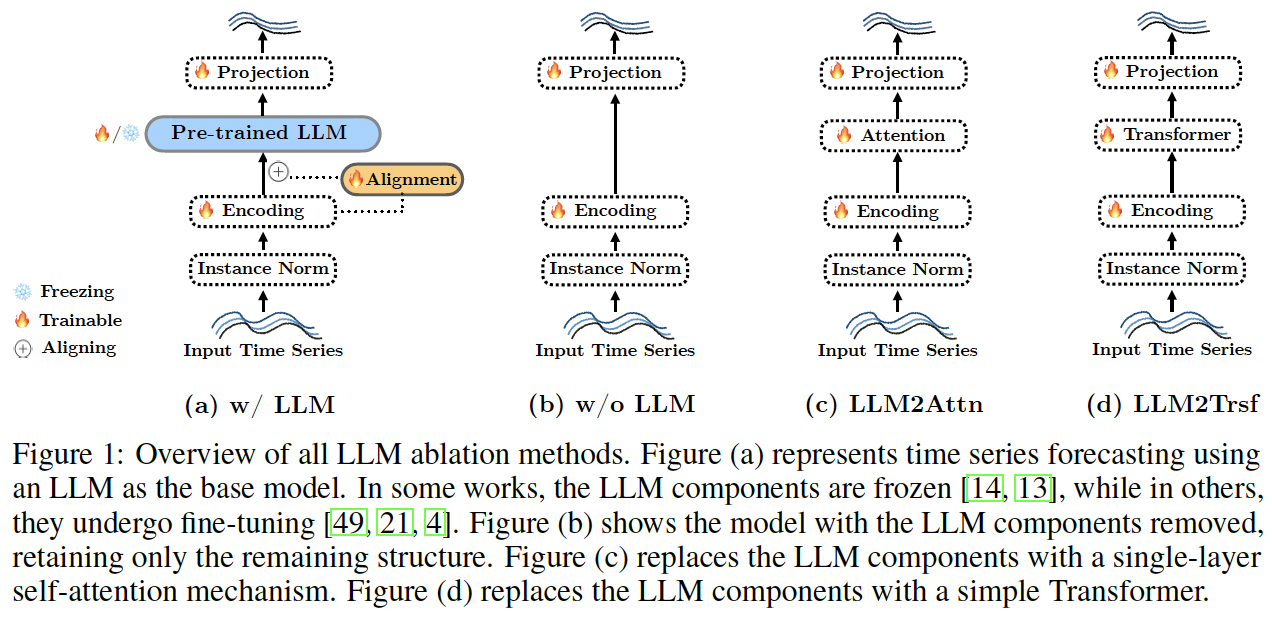Are Language Models Actually Useful for Time Series Forecasting?
Contents
-
Abstract
-
Introduction
-
Related Works
-
Experimental Setup
0. Abstract
LLMs are being applied to TS forecasting
Ablation studies with 3 LLM-based TS forecasting models
\(\rightarrow\) Removing the LLM component ( or replacing with basic attention ) does not degrade performance!
Even do not perform better than models trained from scratch!
1. Introduction
Claim: Popular LLM-based time series forecasters perform the same or worse than basic LLM-free ablations, yet require orders of magnitude more compute!
Experiment
- 3 LLM-based forecasting methods
- 8 standard benchmark datasets + 5 datasets from MONASH
2. Related Work
(1) TSF using LLMs
Chang et al., [5]
- Finetuning the certain modules in GPT-2
- To align pre-trained LLMs with TS data for forecasting tasks
Zhou et al. [49]
- Similar finetuning method, “OneFitAll”
- TS forecasting with GPT-2.
Jin et al. [14]
- Reprogramming method to align LLM’s Word Embedding with TS embeddings
- Good representation of TS data on LLaMA
(2) Encoders in LLM TS Models
LLM for text: need “work tokens” ( \(1 \times d\) vectors )
LLM for TS: need “TS tokens” ( \(1 \times d\) vectors )
(3) Small & Efficient Neural Forecasters
DLinear, FITS ….
3. Experimental Setup
(1) Reference Methods for LLM and TS

(2) Proposed Ablations

(3) Datasets

